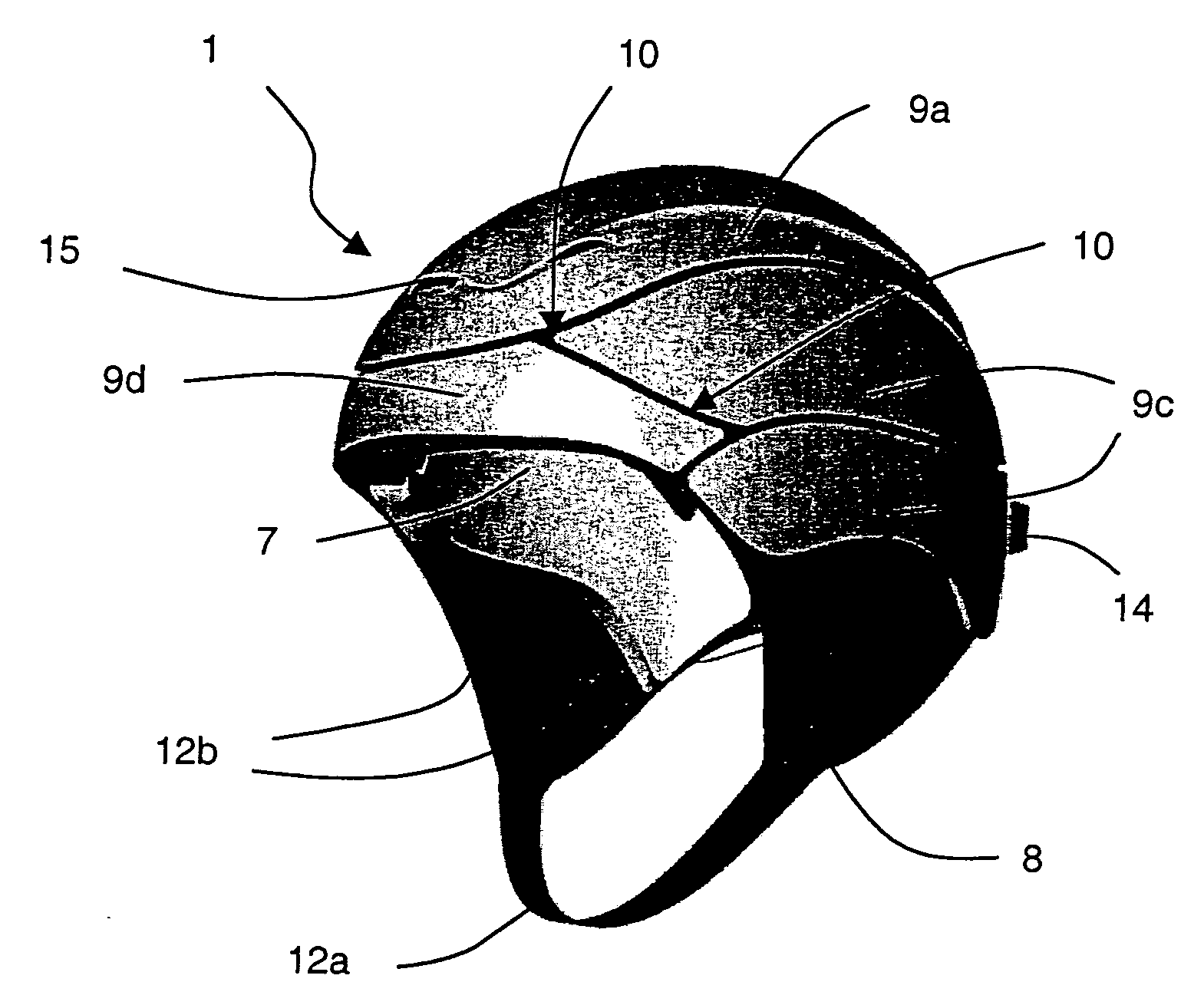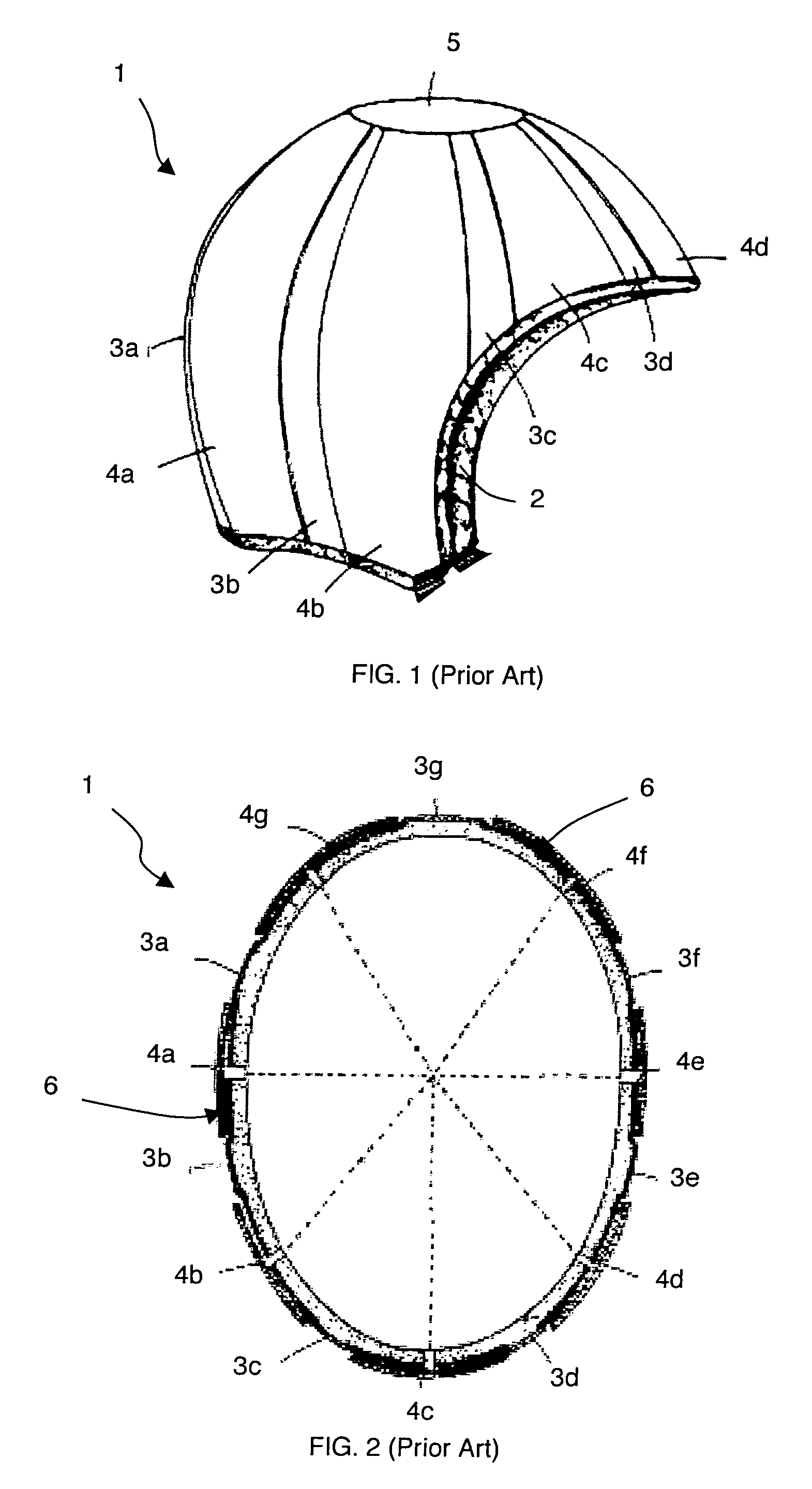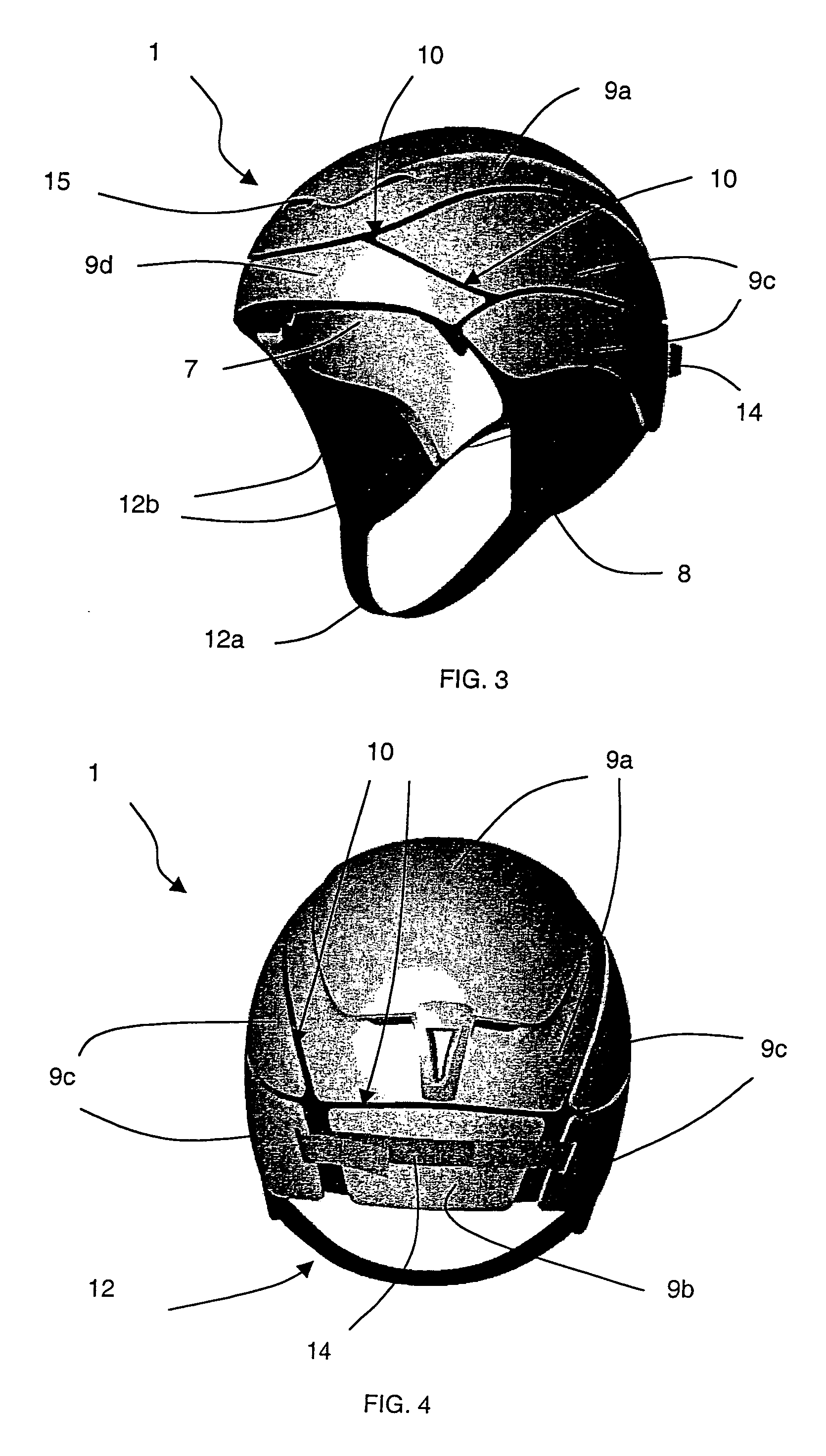Semi-rigid protective helmet
a protective helmet and semi-rigid technology, applied in the field of protective helmets, can solve the problems of insufficient adjustment of the morphology of the head, headaches for users, and inability to optimize the adjustment of the head shape, so as to achieve the effect of optimizing the comfort and protection of users
- Summary
- Abstract
- Description
- Claims
- Application Information
AI Technical Summary
Benefits of technology
Problems solved by technology
Method used
Image
Examples
Embodiment Construction
[0024] In FIGS. 3 and 4, a helmet 1 comprises an internal layer formed by a deformable foam liner 7, flexible joining means formed, for example, by a cap 8, and an external layer formed by a plurality of rigid shell segments 9. The shell segments 9 are fixedly secured to the cap 8 and are articulated with respect to one another by means of the cap 8. The cap 8, preferably made of flexible material of textile or elastomer nature, covers the foam liner 7 and ensures articulation between the shell segments 9. The shell segments 9 are fixed and arranged on the cap 8 in such a way as to form a crown segment 9a, an occipital segment 9b, four transverse side segments 9c, and a front segment 9d. In the particular embodiment of the helmet 1 represented in FIG. 3, the different shell segments 9 are not joined and are separated from one another by gaps 10. These separating gaps 10 enable a very flexible articulation of the shell segments 9, when the helmet 1 is fitted on the user's head.
[0025...
PUM
 Login to View More
Login to View More Abstract
Description
Claims
Application Information
 Login to View More
Login to View More - R&D
- Intellectual Property
- Life Sciences
- Materials
- Tech Scout
- Unparalleled Data Quality
- Higher Quality Content
- 60% Fewer Hallucinations
Browse by: Latest US Patents, China's latest patents, Technical Efficacy Thesaurus, Application Domain, Technology Topic, Popular Technical Reports.
© 2025 PatSnap. All rights reserved.Legal|Privacy policy|Modern Slavery Act Transparency Statement|Sitemap|About US| Contact US: help@patsnap.com



